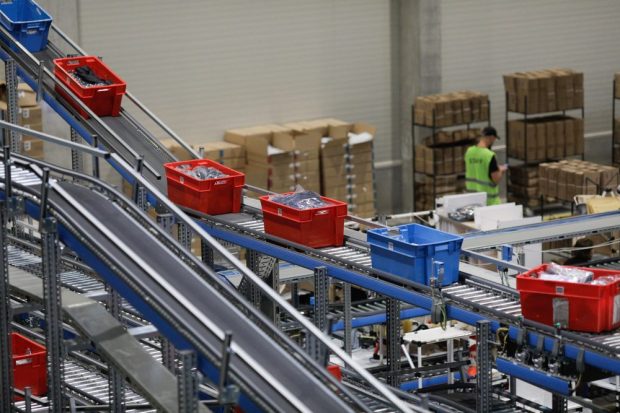B2B Payments Go Digital — or Go to Die

Once businesses go digital, they don’t go back.
After all, the future only moves in one direction.
That’s according to Luke Trayfoot, chief revenue officer of online marketplace payment technology solution MangoPay, who tells PYMNTS that he sees a “burgeoning requirement” for B2B platforms to initiate more of a digitally native approach.
PYMNTS has been closely tracking the rising trend of digitization across the payments landscape and beyond.
As a business, MangoPay breaks out the B2B landscape into three key segments: digitally native platforms and marketplaces, wholesaler communities, and procurement and corporate franchise networks.
“We see a very good fit right now with the digitally native platforms,” Trayfoot said. “They’re ready to go, they’re hyper-targeted and they’re ready to digitize further on their processes.”
The interesting dynamic, he adds, is when you get to the wholesale sector where there’s a growing demand to digitize forward and these traditional players in B2B are increasingly looking to get into a more digitally native payment flow.
See also: Building a Digital Bridge for Legacy Customers
“That becomes a little more complex,” Trayfoot said, “because they’ve got longstanding and established processes — thankfully, we have a very flexible platform with regard to pay-ins, digital wallets, pay-outs, and KYB [know your business] so they don’t have to change their business to fit our requirements. Instead, we can actually be flexible to meet their needs.”
The big demand right now, the MangoPay CRO noted, is for digital wallets. And this emergent fact is fortunate for his firm, given that MangoPay’s own platform was born out of a wallet solution rather than a strictly payment processing one.
“[Businesses] want the ability to hold money in, for lack of a better phrase, an escrow kind of capability. They’re trying to build that relationship, and so the B2B platform needs to be the trusted source to hold those funds — but obviously, a lot of these platforms don’t want to come into play with regulations and payment licenses and so on.”
Regulation in KYB and AML (anti-money laundering) is only going in one direction, Trayfoot adds, noting that MangoPay’s solutions help businesses solve for and comply with those now, new and next regulatory requirements.
As PYMNTS has previously noted, this emergent paradox of old, new and necessary is why digital marketplaces and B2B platforms are increasingly capitalizing on the white-space opportunity that exists to modernize legacy operations.
Operational Flexibility Can Help Drive Critical Cash Flow Wins
“The B2B platform needs to provide the funds to create the liquidity where ultimately everyone wins,” Trayfoot said. “The quicker you get that cash flow moving, the more the sellers can restock, the buyers can get terms — so we come back to this flexibility where we’ve seen customers say, ‘we’ll take your APIs and we’ll make that work with what we have today.’ I think the overarching theme is platforms are looking to bring in financial operating systems that make it so it’s completely seamless where the buyer doesn’t need to go to a different site just to make a payment … that kind of embeddedness is a big trend we are seeing.”
He noted that underpinning this growing trend of technical flexibility is an upward trend in technical experience overall.
“Tying this into today’s macroclimate, people are looking for ways to optimize their businesses, they’re trying to reduce costs and increase growth at the same time — and technology helps enhance that,” Trayfoot said.
The key trends, Trayfoot added, really come down to how businesses want to transact.
The Next-Generation Tools Driving B2B’s Next Evolution
When it comes to emergent technology, including buzzy tools like generative AI, Trayfoot said there is absolutely value to be mined in the B2B space.
MangoPay recently acquired fraud detection and prevention solution Nethone, and Trayfoot said MangoPay has “a few more [acquisitions] in the pipeline coming out soon which tie into that AI concept of embedding a level of automation into the business and leveraging no-code tools.”
“A big thing for us is being able to empower our customers, and layering AI on top of the data is one key way to do this for payments,” Trayfoot added. “In some cases we already do this, where we surface 100% of the data and can start to build out through AI certain projects of where things are going, maybe automate the rates or lower declines and increase conversions, but it’s not necessarily the case across the board.”
As for what the MangoPay leader is looking forward to most?
Expanding MangoPay’s business to the U.S., he says.

